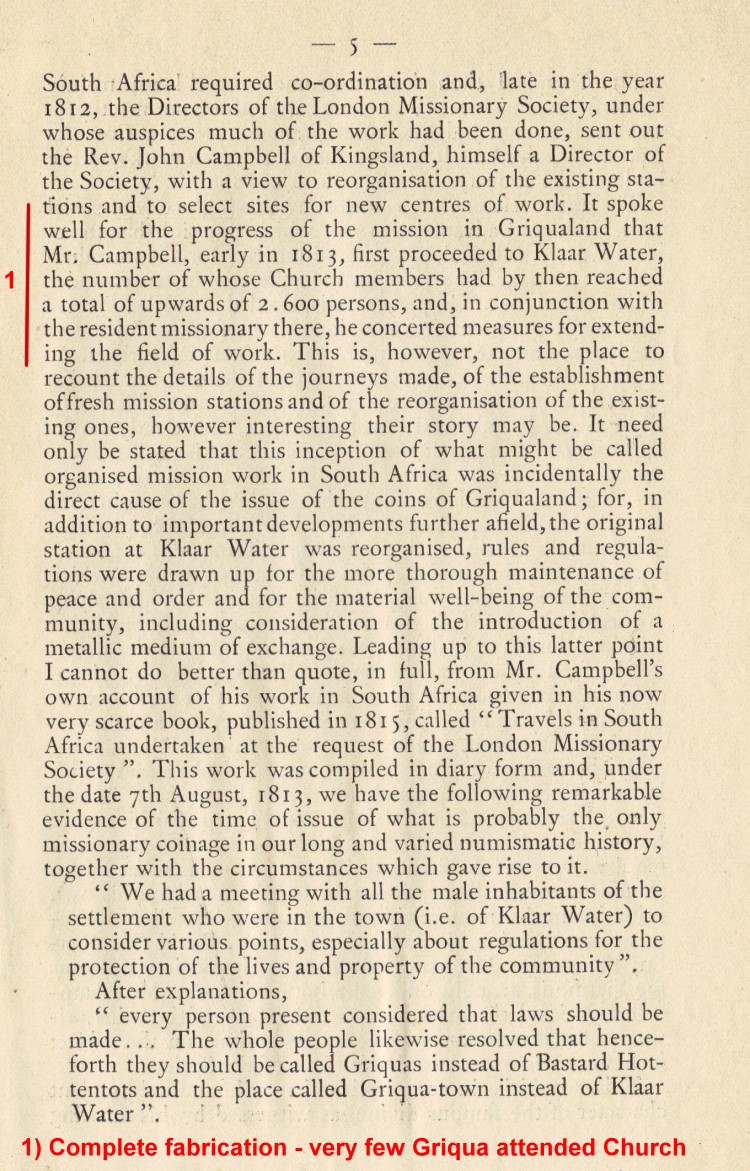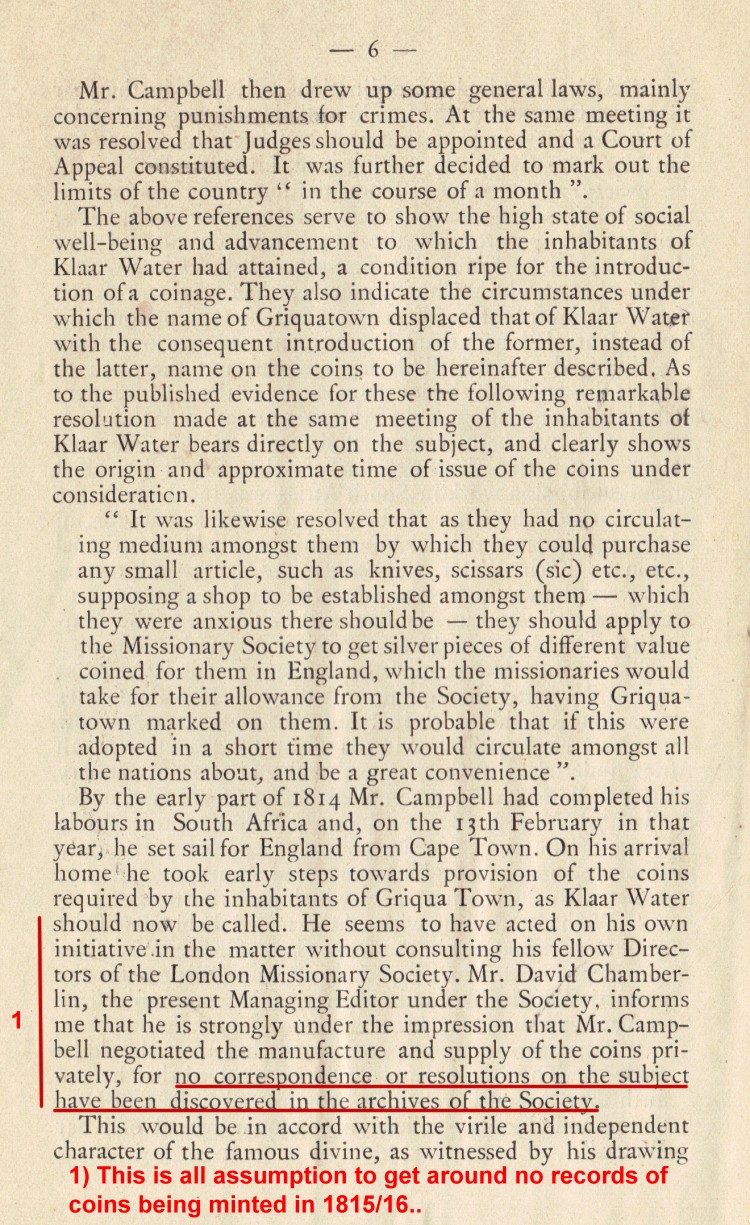

Below are scans from an original copy of Parsons 1927 research from my library which have led to the flawed claims about the Griquatown coins. I have personally scanned the pages from his book - and you will see for yourself how flimsy and assumptive his reasoning is. Yet prominent numismatists continue to stand by this flimsy research.
There are only three references listed - Campbell, Moffat and Livingstone. Two of them have absolutely no relevance to the coins.
As you will soon see for yourself Parsons flawed work is largely based on assumptions and not fact.
I have made notations and underlined dates in red - so you can see for yourself how little relevance his "references" have to his flawed assumptions and claims.
Note how numismatists Boyne and Atkins in referenced work on the Griquatown Coins (on the page of the first scan below and top of second scan - headed page four) refused to confirm if the coins had actually circulated OR when.
Note how the reference, in the first scan below, taken from Moffat is on a book published in 1846 - Moffat first went to Griquatown in 1820. Moffat's comments about the lifestyle of the Griqua speak for themselves. Moffat NEVER makes any reference to the Griquatown coins in any of his books OR letters. (He was a compulsive writer).


Now you will see on pages headed 5 and 6 below how Campbell's comments from his book on his first travels to South Africa are woven into the story to try to give it integrity. See key comments in red on bottom of page headed 6 below.


The old correspondence referred to on top of page headed 7 below does not exist - and probably never did when one considers how flimsy Parsons research really was (see point 1 in red). In fact Schoeman's research shows that the London Missionary Society were talking about having silver tokens issued in 1817 because there was no money in Griquatown at that time.
Importantly, in point two (in the bottom of page headed 7 - in red below) Parson assumes that they were bona-fide coinage while Schoeman's book carrying extracts from the original London Missionary Society minutes confirm that they were issued as TOKEN coins.

Importantly Parsons states in the scan above "Under their elected chief, Waterboer, who afterwards by treaty received a sum of money per annum from the Colonial Government for the support of schools in his country."
When we read Schoeman's research direct from the London Missionary Society records from 1821 (not 1814 to 1816 etc when Parsons claimed they "circulated for two years"):
On page 131 to 133 Schoeman transcribes a letter written by the resident Griquatown missionary H Helm written to Dr John Philip in Cape Town on 21 June 1821 which reads as follows: Andries Waterboer has for some years assisted me in the school. Since he became Captain he could not regularly attend, as his duty required frequently his absence from home. I have therefore discharged him in May last. And indeed the school has not lost much in him. The natives like much to be preaches but not schoolmasters, if they think that work to be too mean or too troublesome I do not care. Br Anderson made the agreement with him that he would receive for payment 60 Rijksdaalders a year from the society. Having no money, he has for the last two years received nothing except 13 Rijksdaalders 4 Schillings.
Parsons by leaving out the the form of payment made to Waterboer and when it happens implies this is relevant to the Griquatown tokens.
Livingstone is the third reference in Parsons work - his book dated 1857. This reference has no relevance to whether the Griquatown coins circulated or not. (Noted in red below)
The rest of the book just describes the Griquatown token coins.
What I find intriguing in the page below is the comment that the bronze pieces only appeared MUCH later when you consider that there is no reference to anything but silver tokens in the London Missionary Society records.
Now that is a mystery! Were the bronze 1/4 and 1/2 genuinely issued in c 1819 or are they more recent forgeries? Seems strange no one knew about them until after 1866.